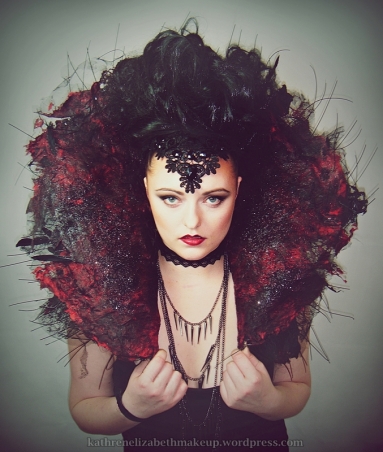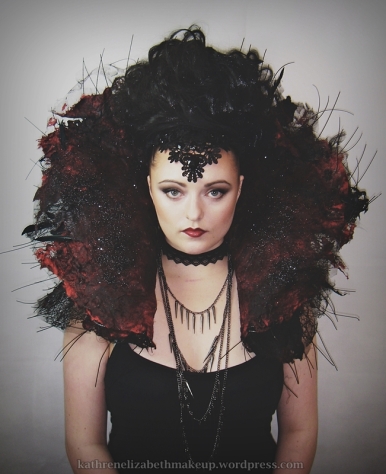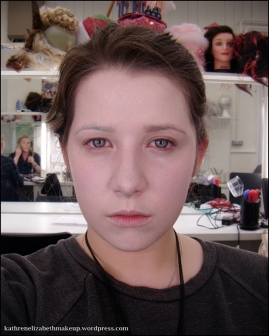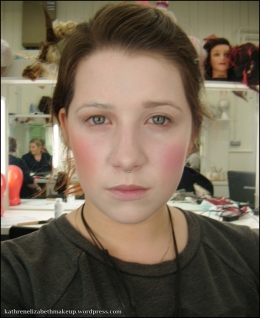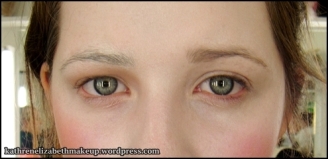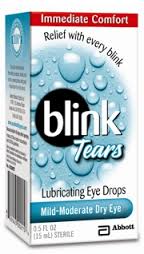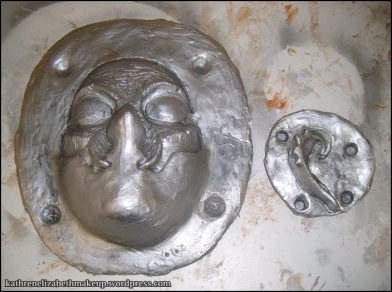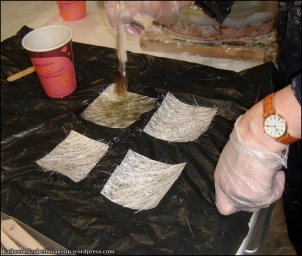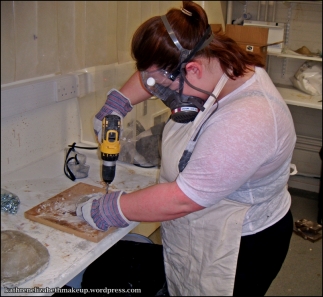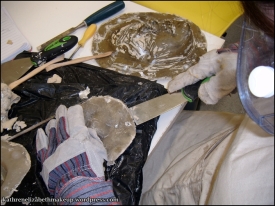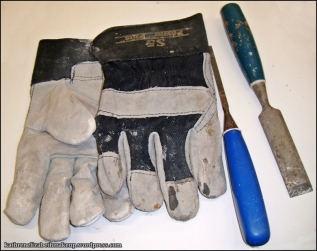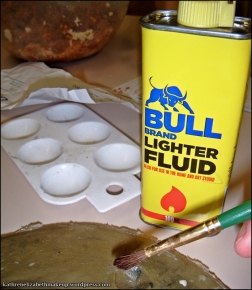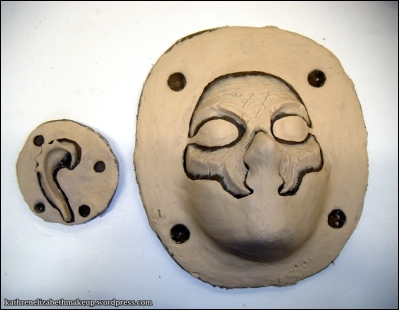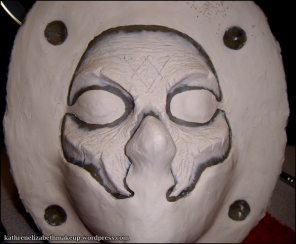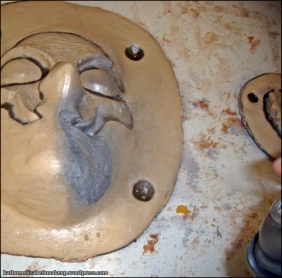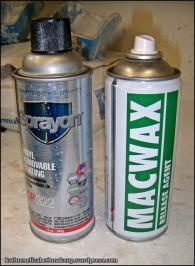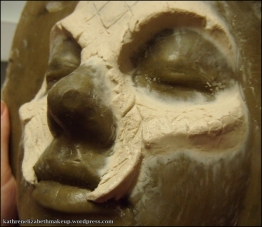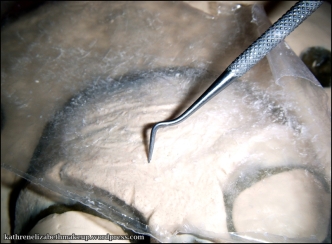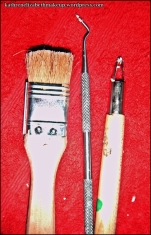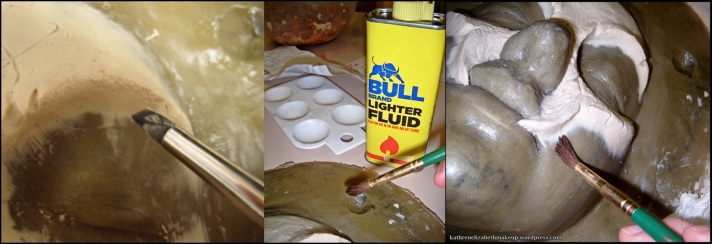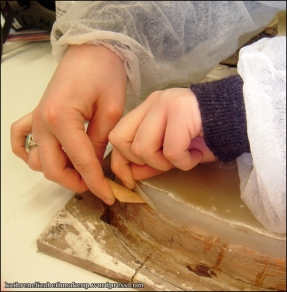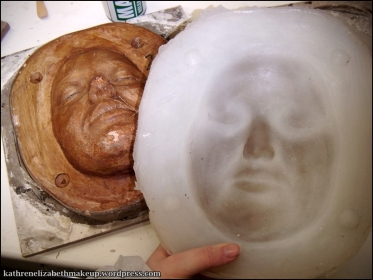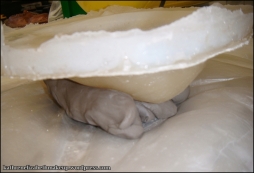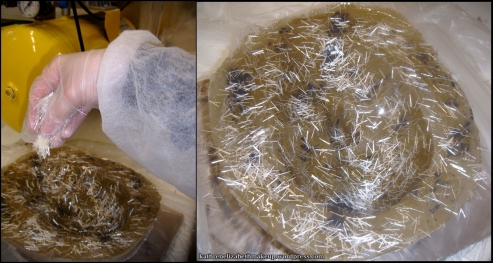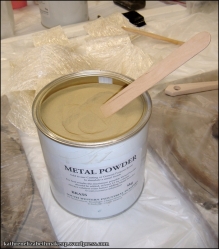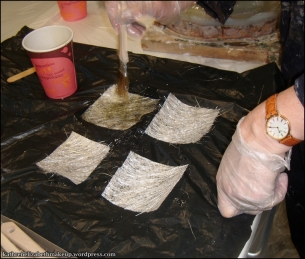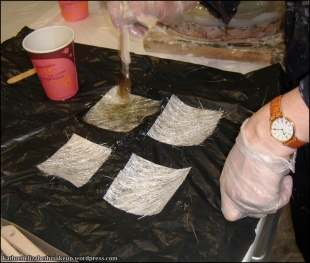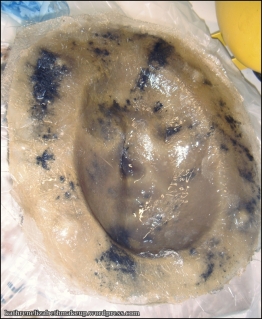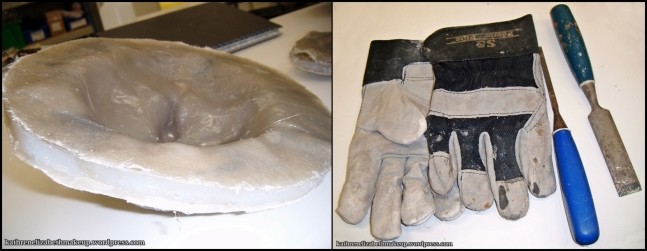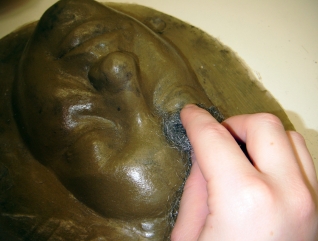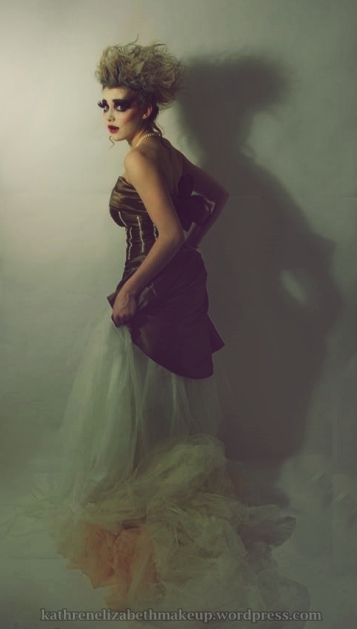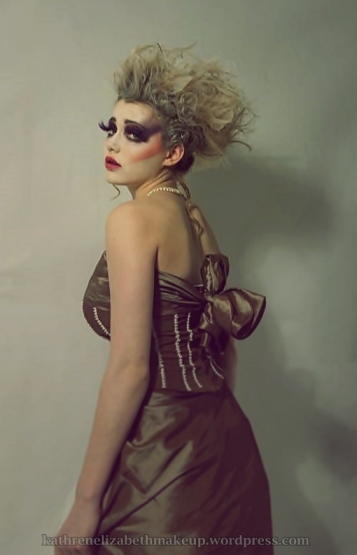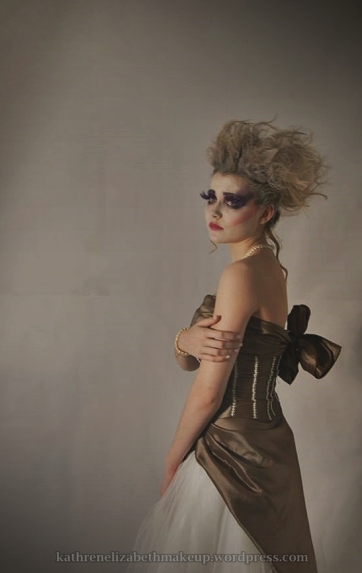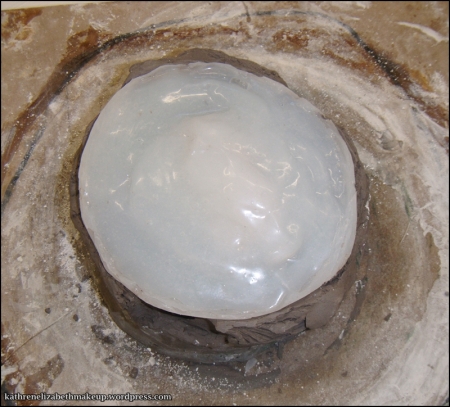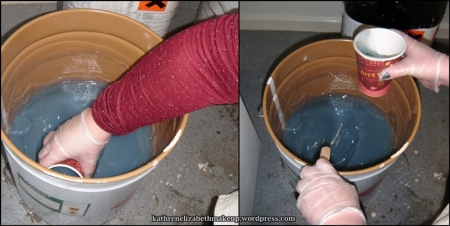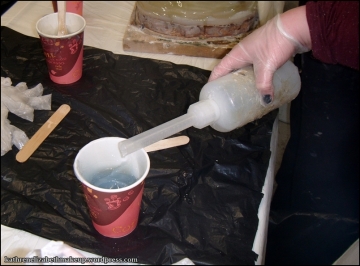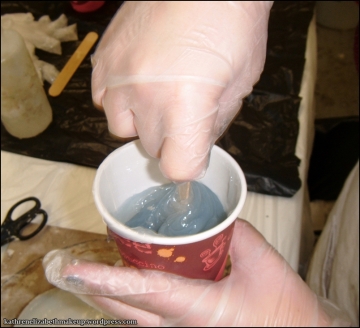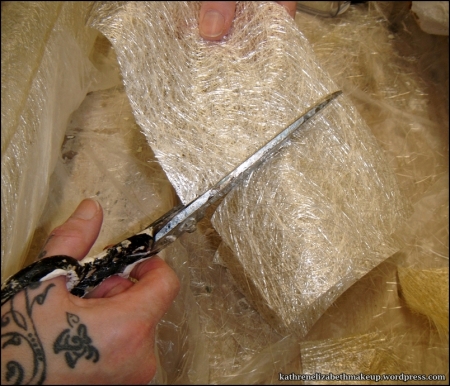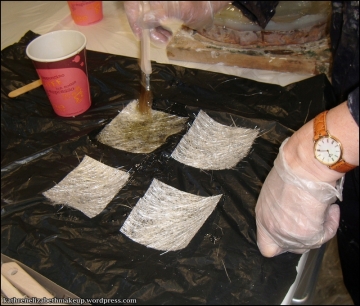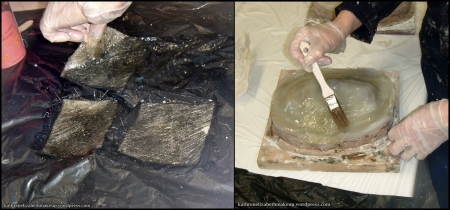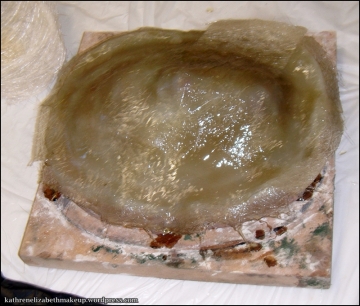Hello again! Okay so here is the second part of my 16th century historical process – the dressing of the wig.
First a little bit of history:
Hair- At the end of the 16th Century in England, the hairstyles of both middle and upper classes had become more elaborate. Taking inspiration from their Queen the ladies chose to curl, dye, and pad out their hair to give the desired colour and shape. Though blonde was the fashionable colour for other countries (a trend that continues today – more hair dyes are in blond shades than any other), the English women of the era were loyal to Queen Elizabeth, and chose to dye their hair red hair was the most popular colour for women.
The desire to have perfectly cured fiery red hair meant that there was a thriving business in wigs and hair pieces for women unsatisfied with their own natural hair whether is be length colour or thickness.
Rats – Elizabeth herself seems to have favoured curled hair, sometimes padded with “rats” – pads made of hair, shaped to help create the high styles that exemplified the time. They are called rats because they’re roughly shaped like a rat – pointed on one end (the nose), high and rounded on the other (the haunches of the rat). Elizabeth continued to wear this style until her death.
To create the typical 16th Elizabeth style, the hair from the ears back was pulled into a neat coiled bun (sometimes braided or padded to give it more bulk), and the hair from the ears forward was styled. The bun may have been sewn into place with ribbons or thread. Certainly the tortoise-shell pins of the Victorian era and the bobby pins of the early 20th Century were not known. Securing the hair by sewing it into place is not as awkward as it sounds; in fact, the bun is more secure and comfortable when sewn in, as there are no pins to slip or dig into the scalp. There would be no problem sleeping in the bun because most Elizabethans slept sitting propped up by pillows, as they feared.
Process:
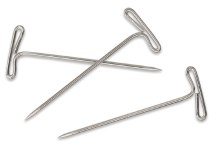
First I began by placing the wig onto a malleable block head – securing it with 5 ‘T’ pins. I placed the pins at the edge of the wig on the centre of the front of the wig, back centre, both sides and one on the very top of the head. It is important to make sure you know how many pins you have placed into the wig as you need to make sure you remove all of them before applying it to your model as this is a health and safety risk. When pinning the wig to the block I had to keep my design idea in mind. As I intend to use a bald cap to create a higher forehead I want to make sure I angle the wig correctly on the block as the style may not sit right on my models head if I styled it in the wrong direction.
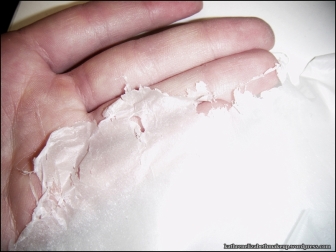
To view a post on making bald caps please click the following link:
https://kathrenelizabethmakeup.wordpress.com/2013/04/14/making-bald-caps/
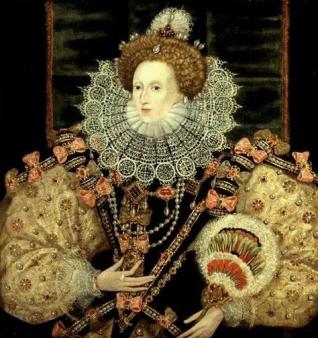
(Image source -www.leicestergalleries.com)
I then began researching for reference images. At first I focused on other interpretations of 16th century Queen Elizabeth themed hair. Which was a mistake as it is secondary research. Though it is impossible to gather primary research I can begin by viewing and analysing 16th century portrait paintings of Queen Elizabeth 1st as this is a better reference source as it is more true to what she looked like.
Once I gathered enough images I then began to think about how I would dress the wig to resemble the style I was looking for. As this look is going to be aimed more towards a TV and film I want it to be as accurate as possible therefore I need to carry out lots of research to make sure each aspect of the look is correct.
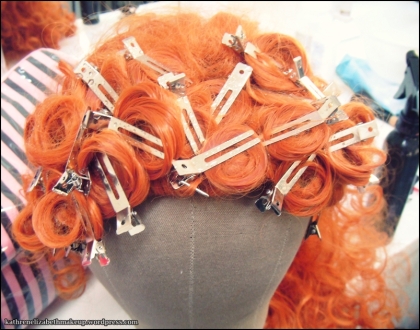
To take some of the frizz out of the curls at the front of the wig I wanted to try a pin curling method which has been effective in the past. I drenched the curls with a water spray bottle and rolled them up into pin curls with my fingers before securing them with a flat clip. These clips were perfect as they didn’t dent the curls as some clips may do.
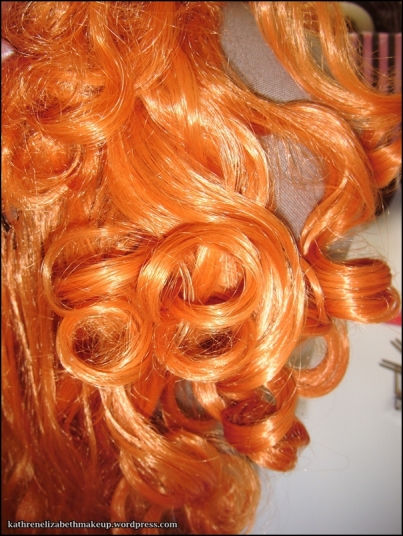
I then left the curls to dry over night to make sure they had plenty of time to dry thoroughly. I then released the curls carefully – making sure to not tangle them together. The wet set worked really well as it had taken the majority of the frizz out of the curls.
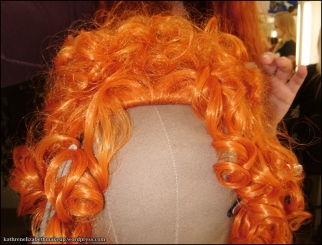
From looking at my reference images it is clear that in some pictures the hair has a lot of height at the front often in a heart shape or a rounded getting slightly higher in the centre. To recreate this is thought I would need to make padding to pin underneath the front section of the hair however this was not the case. I was able to gently back comb the hair at the root creating my own padding with the hair on the wig. To do this I took small sections and thoroughly back combed them and then used a rolling method to create a bulk at the top of the head.
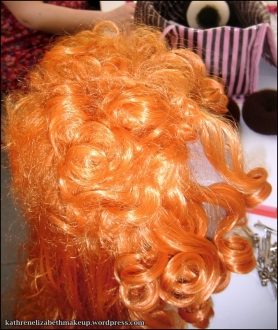
This also left me with frizzy ends at the top of the head which I could then dress into the front part of my design. Once I was happy with the volume of the wig I was then able to pin it into place. I used a different technique however. I used a fish tail clip method which is a more permanent way of securing the hair. By bending a clip at the end creates an arrow effect which anchors the pin into the weft of the wig.
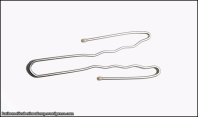
I then began to use the curls in the front to cover the front of the wig to make it look more realistic when it is on my model.
My wig is not complete at this time but I did buy some fancy assessories to add into the wig when I have completed it. I hope to have it finished by next week to then shoot the look in the Easter holidays! I shall keep you posted on how it is all coming together!
Thanks again for visiting!
Katy x
